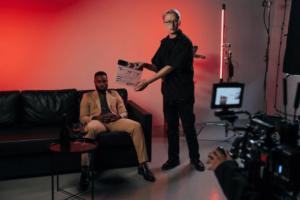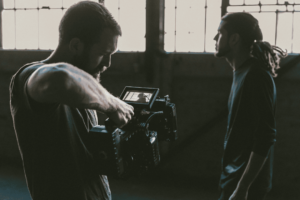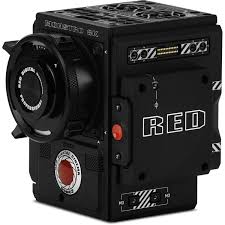Movie tropes are devices for telling a story that communicate something figurative. Tropes can be very simple, like a common object that has a symbolic meaning. They can also be complex, such as actions that have referential meaning.
Many times, you’ll hear people discussing tropes in a negative light. That’s because tropes are often confused with cliches. Tropes are just the thematic storytelling devices that allude to something beyond the literal meaning that an object, a person, or an action has. The way you use a trope in your film is what determines whether or not the trope turns into a cliche.
Common Movie Tropes
Great movie tropes have played a role throughout the history of film.
The MacGuffin
A MacGuffin is a figurative person, question, or object that moves the plot forward.
Ultimately, the MacGuffin proves meaningless.
Many movie tropes that come from the film noir era are MacGuffins, such as “The Maltese Falcon.”
Western Movie Tropes
Tropes can be popular and still be cliches. Just consider the Wild West showdown as a film climax.
The Spahn Ranch sequence in “Once Upon a Time… in Hollywood” draws on Quentin Tarantino’s directing style to subvert the classic trope.
Films from Clint Eastwood, Ang Lee, John Ford, and the Coen brothers also redefine the Western trope meaning.
Example of a Movie Trope: Characters Overcome Their Differences
Two characters getting forced to work together in spite of their significant differences is a commonly used trope. Some movies do a good job subverting audience expectations for this trope.
The two characters in “Touch of Evil” try to stop each other from reaching their goals, for example.
You can also prevent your tropes from becoming cliches by approaching your story from a comedic standpoint, as is done in “The Other Guys.”
Character Tropes
When considering if a character is a flat character or well-rounded character, think about character tropes that can easily become cliches. Examples of common, often-cliched character tropes include:
- The damsel in distress
- The chosen one
- The girl next door
- The femme fatale
- The mad scientist
- The trusty sidekick
- The dumb muscle
- The wise old man
- The antihero
More Examples of Movie Tropes
You’ll recognize plenty of other common movie tropes! Here are some more:
- Aliens
- Undead
- Villain’s throne
- Hot and cold
- High heels horror woman
- Walking away from an explosion
- My hero
- Misguided dad
- Whoops, didn’t see you there
- Age-old wisdom
- “A wise person once told me”
- The trophy wife
- Hello?
- “He’s right behind me, isn’t he?”
- Well that’s a cliffhanger
- Geek to chic
- “Psycho” ex-girlfriend
- Cut the red wire
- The “chosen” one
- Windows of the soul
- That fat friend
- Get this bread
- “KissusInterruptus”
- The key to keys
- “Gimme a Beer”
- Terrible henchman
- Narrator
- Coming in hot
- Off the case
- Youthful awareness
- Love triangle
- Get the gun already!
- Cut it out
- Zoom, zoom
- Mirror scare
Movies borrow from literature and comic books, too. Those categories feature plenty of their own tropes. Here are a few examples to watch out for as you write:
Cinematic examples of tropes:
- Bad guys wear black
- Comic relief
- Reluctant hero
Examples of tropes in comic books:
- Assemble!
- Capes
- Teenage sidekicks
Literary tropes:
- Lady Chatterley’s lover
- Teens are forever
- Size means power
Other Types of Tropes
You’ll also find various other tropes in cinema, literature, and beyond. These include:
Ready to do some further reading? You can explore some other common tropes. Conversations online are filled with people fed up with overused tropes and tropes that just don’t make sense.
Outdated Movie Tropes
A variety of tropes appeared time and time again in classic films. Some still work today, while others are certainly outdated. Of course, you should make sure to avoid racial stereotypes in your movies.
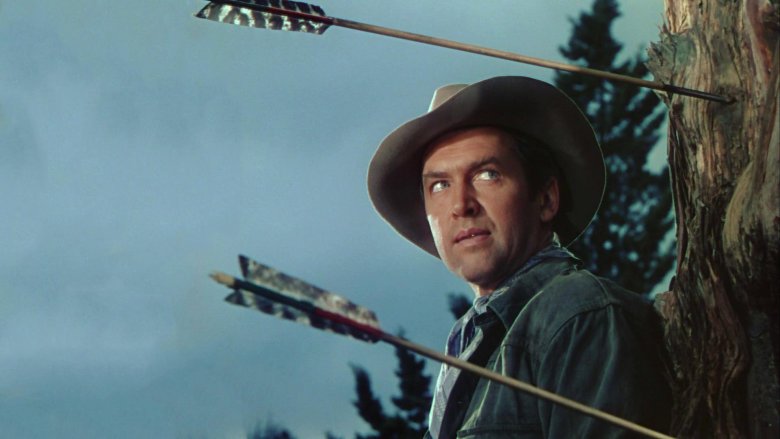
Scene from “Broken Arrow”
You’ll find an abundance of classic movies that have tropes that are cringe-worthy and unacceptable today. These tropes include:
- Blackface
- Cowboys vs. indians
- “Noble Savage”
- Grown men in romances with teenage girls
- Gay people who are turned straight by a partner
- Gender-bending portrayed as funny or evil
- Helpful, doting Black servants
- Portraying mob justice positively
- Men who spank women
- Colonial heroes
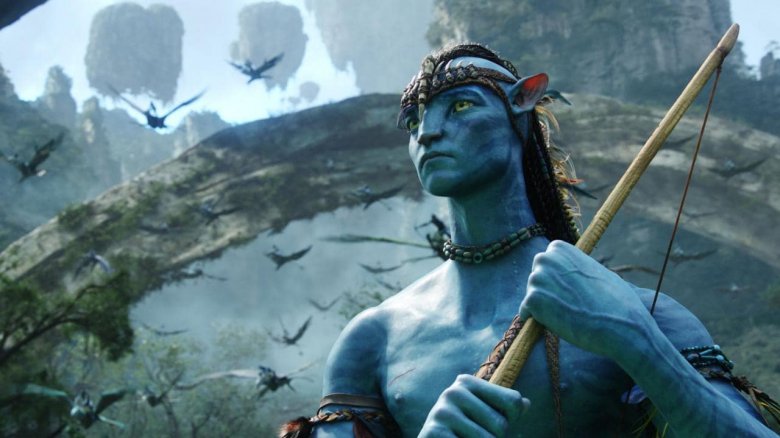
Scene from “Avatar”
Cliche Horror Movie Tropes
The horror movie genre features an endless supply of easily recognizable tropes. When not used carefully, these tropes can very quickly become cliches. On the other hand, subverting horror movie tropes can lead to powerful, original stories.
Some examples of horror movie tropes that have become cliche include:
- Someone wearing white and soaked in blood
- A couple having sex and then getting murdered
- Women who run and fall down constantly
- The completely invincible villain
- The “final girl”
- The Black person always dying first
(There are a variety of reasons why Jordan Peele‘s Get Out was so highly regarded. One was flipping that formula.)
- The car that just won’t start
- The old man warning the heroes to turn back
- Guns that are easy to shoot and never run out of ammunition — until it’s convenient
Tips to Help You Avoid Common Movie Tropes
The first step to avoiding using movie tropes in a cliched way is to make yourself aware of overused tropes. You can do this just by watching as much TV and as many movies as possible. You’ll start to recognize overused tropes, and then bring more original ideas into your own screenwriting.
There are some writing techniques and tips you can also keep in mind that will help you stay away from worn-out cliches while you’re developing your film script. This includes:
- Focusing on good characterization
- Embracing uncertainty
- Doing your research (In other words, read up on a place or event you’re not familiar with if you’re planning to write about it. If you go with common knowledge, you’re going to fall into cliches. Depth, on the other hand, is the best way to avoid falling into cliched patterns.)
- Resisting conformity (Don’t stick with a familiar screenplay structure or narrative arc because you think it will create suspense, tension, or sadness. Make your story your own.)
- Going beyond the usual movie themes
- Letting your characters experience the worst possible scenario so that they can endure loss, guilt, and darker emotions
- Figuring out what characters really want
- Looking for opportunities to subvert tropes
- Getting to know your characters outside the story
- Allowing characters to change in terms of personality
- And, of course, avoiding cliched situations
Tropes vs. Cliches (and Archetypes)
A trope is not necessarily a cliche. A trope is just the motif or device itself. The device is going to be very familiar in both execution and conception to audiences, but that device doesn’t necessarily have to be a bad thing in your film.
Most movie audiences will agree that films lose their impact if writers get lazy, relying on overused movie tropes and cliches to tell their story.
Writers who use movie tropes will have a great tool to use in their storytelling. For example, comedy writers can use a trope to get laughs, while writers for dramas or thrillers may start using a common trope, then turn it on its head to subvert the expectations of the audience.
You want to be certain you don’t fall back on cliched tropes when you could instead use more original, effective techniques for telling your story. When tropes are overused, or they aren’t used well, that’s when they turn into cliches. Cliches are things we expect will happen.
One way to use tropes effectively, without turning them into cliches, is to just subvert or even exaggerate the cliche.
What’s An Archetype?
In addition to cliches, tropes are often also confused with archetypes. Archetypes are the original models that any future work draws from. A trope is a recurring theme, but the archetype was the original theme that led to the trope.
Understanding movie tropes will give you the tools you need to use them well, subverting expectations to avoid cliches and create unique, original stories. You can learn more about film and how you can improve your skills by applying to the Nashville Film Institute here.




